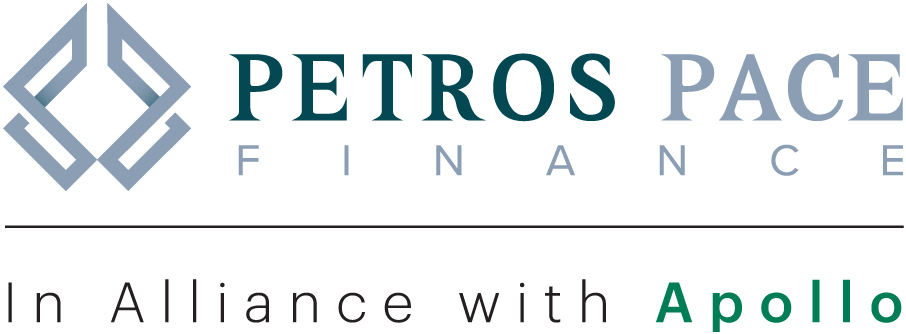
Mansoor Ghori is the CEO & Founder of Petros PACE Finance, a leading C-PACE provider.

Mansoor Ghori Forbes Councils Member
Forbes Finance Council
The adage is correct: “In adversity there is opportunity.”
While skyrocketing interest rates led to the collapse of Silicon Valley Bank and left the regional banking industry in turmoil, both factors have also caused serious dislocations in the commercial real estate market. This situation has forced those in the structured finance industry to navigate and operate in a more challenging environment rife with increased scrutiny, tighter regulations and an abundance of caution by investors and lenders.
While the world readjusts to the changing landscape and waits for a return to more certainty and normalcy, opportunities in commercial real estate exist for owners, developers and experienced investors and financiers. As a case in point, we are seeing these opportunities more than ever within the commercial property assessed clean energy (C-PACE) industry. There are a number of trends fueling innovative and creative uses for C-PACE; once considered alternative or niche financing, it is now being embraced as mainstream.
What Is C-PACE?
A public-private partnership enabled by state and local legislation, C-PACE allows private lenders to provide financing for energy efficiency, water efficiency, renewable energy and resiliency projects, measures that improve building energy performance. C-PACE is financing that keeps environmental sustainability—and our future—in mind, by increasing energy efficiency in the structures of today.
It’s not just solar panels. Think: lighting, plumbing, windows, boilers, HVAC and building envelope. The list of eligible measures is long and even includes seismic and other resilience upgrades in states such as California and Florida that have those critical needs. C-PACE enables owners and developers of commercial properties with access to relatively low-cost, long-term financing that is paid back through an annual assessment on the organization’s property tax bill.
C-PACE does not require upfront costs and can be used to finance new construction, retrofits and rehabilitation. In some cases, eligible projects can even be funded retroactively. If executed properly, C-PACE can help mitigate risk, minimize cost and increase profitability for both parties involved.
While there is a wide range of C-PACE benefits, there are a few potential drawbacks to keep in mind: Currently, there is no federally mandated legislation for C-PACE, making it unavailable in some states and with slightly different statutes throughout the other states. Also, C-PACE loans are designed to be property-specific financing for a particular ownership group, meaning each transaction is uniquely structured based on cost/savings analysis of each specific property. This individualized approach can make it not ideal for financing a full portfolio of properties at once.
Clearing Up Misperceptions About C-PACE
More prevalent than the potential risks, however, is the number of misperceptions regarding C-PACE. Before proceeding, let’s clear up a few of them to provide a better understanding of what it is, and is not.
Misperception 1: C-PACE is a loan. It is not. C-PACE is a voluntary assessment on a commercial property that works more like a municipal bond than a bank loan. It is a long-term fixed-rate financing that does not accelerate on a delinquency and remains on the property until paid in full. It has the priority of a tax, making it a secure investment.
Misperception 2: C-PACE requires government money. It does not. All financial risk for assessments is borne by the C-PACE capital provider and its private investors.
Misperception 3: C-PACE is complicated for property owners. Not necessarily. While specific statutes and programs may be more complex than others, C-PACE financiers have skilled staff to handle complexities with information already available from property owners or developers, making the transaction relatively friction-free.
How C-PACE Is Impacting Commercial Real Estate Financing
Now that you know what it is (and isn’t), let’s take a look at how it’s impacting the commercial real estate financing ecosystem.
Increasing Demand
As the capital markets remain tight due to a combination of factors, C-PACE remains a steady, fixed-rate solution for developers and owners looking to ensure project continuity and completion while minimizing the overall project costs. Historically a comparable source of capital, C-PACE is now oftentimes the least expensive, or most economically sustainable, form of financing available to fill out the project’s capital stack.
Longer Closing Cycles
The need for increased due diligence in today’s environment has resulted in a lengthier deal closure process. In this environment, those C-PACE providers that demonstrate a strong balance sheet, a conservative underwriting process and a higher level of engagement with senior lenders will more likely benefit. This can’t be stressed enough; underwriting done properly reduces risk, and maintaining direct, open lines of communication mitigates potential confusion and error.
This is not the time to overstretch for deals; rather, it’s a time to work with trusted partners and strive for a foundation of economic sustainability, which can in turn drive profitability.
A Greater Number Of Bank-Driven Deals
While C-PACE has historically been instigated by commercial property owners and developers, today, we are seeing more C-PACE transactions initiated by banks. Once a source of conflict, banks and C-PACE providers are working more collaboratively as bank liquidity constraints force them to seek alternative sources of funding for projects.
The impact of these trends has yet to be fully realized, but there are two outcomes we’re already seeing today that are of note: the increased footprint of C-PACE within the capital stack—sometimes 10% higher than previously in my experience—and the continued growth of retroactive financing as more proven use cases continue to be unearthed.
Once considered a niche financing tool, and more recently accepted as mainstream, C-PACE has now come of age to become an in-demand financial solution.
The information provided here is not investment, tax or financial advice. You should consult with a licensed professional for advice concerning your specific situation.
